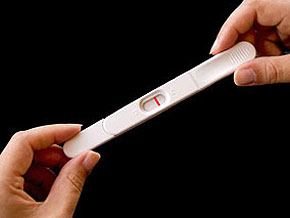What Causes Infertility?

PAGE 2
These are the common causes of female infertility:
Damaged or Blocked Fallopian TubesThe most common cause of infertility in a woman is damaged or blocked fallopian tubes that prevent the egg and sperm from uniting. Sexually transmitted diseases such as chlamydia and gonorrhea are a major cause of tubal scarring and blockage. In addition, scar tissue that forms after pelvic surgery may also lead to fertility problems.
Endometriosis
Conditions such as endometriosis, in which the lining of the uterus grows outside the womb (causing scarring, pain and heavy bleeding), can also damage the fallopian tubes and ovaries. The presence of even a minimal amount of endometriosis in the pelvis is believed to adversely affect fertility by releasing toxic substances that might reduce the potential of the egg to be fertilized. The egg, of course, passes from the ovary through this environment to the fallopian tube, so while the presence of minimal endometriosis might not necessarily adversely affect the transportation mechanism, the egg's exposure to this toxic environment might diminish its ability to become fertilized. It has also been shown that even the mildest form of endometriosis releases "toxins" into the local; pelvic environment. This can damage the woman's eggs as they pass from the ovary with ovulation to the fallopian tube, where the sperm are waiting. Once exposed to such "toxins," the envelopment of the egg (zona pellucida) becomes resistant to fertilization. This explains why all women with endometriosis (regardless of its severity) have markedly reduced fertility potential.
Damaged Ovaries
Damaged ovaries may also contribute to infertility. Diseases such as pelvic inflammatory disease or endometriosis, as well as surgically induced scarring, may anchor the ovaries in an awkward position or form a barrier that prevents the finger like extremities of the fallopian tubes (fimbriae) from applying themselves properly to the ovaries' surface, thereby compromising their ability to "pick up" the egg at the time of ovulation. Although one or both fallopian tubes may be perfectly free and mobile, the corresponding ovary could be inaccessible and unmovable. In such cases, the egg or eggs would be ovulated into the abdominal cavity instead of being retrieved by the fimbriae.
Abnormal Ovulation
Abnormal ovulation is another common cause of female infertility. Some women do not ovulate at all, while others ovulate too early or too late in their cycle for a pregnancy to occur and survive. One of the reasons normal fertility usually wanes after 35 is because ovulation is more likely to become abnormal later in the childbearing years. In addition, it is believed that the quality of eggs decreases as women get older because the eggs' meiotic capacities are diminished by the aging process. The quality of the woman's eggs is one of the major determinants of whether a couple can get pregnant. A woman may also be infertile because disease, surgery or infection has damaged the lining of her uterus. Damage caused by scarring or the presence of tumors, such as fibroids, may prevent the embryo from attaching to the endometrium and developing properly.
Abnormal Uterus
Abnormalities in the size and shape of the uterus can also cause infertility problems. Sometimes women are born with an abnormally shaped uterus as a result of exposure to certain drugs their mothers took during pregnancy. A classic example of this disorder is the "T-shaped" uterus and significantly smaller uterine cavity often found in women whose mothers took diethylstilbestrol (DES) during pregnancy.
Hostile Cervical Mucus
Some women are unable to produce good quality mucus in the cervical canal (the entrance to the uterus). This mucus is necessary for vitalization of the pass through the cervical canal to reach the uterus and from there the outer part of the fallopian tube where fertilization takes palace. The production of hostile cervical mucus might be due to infection or due to antibodies or an allergic response to their partner's sperm. These antibodies may be passed into the cervical secretions and thereby prevent fertilization by destroying or immobilizing the sperm. Occasionally, surgery or injury to the cervix may have destroyed the glands that produce cervical secretions.
As a reminder, always consult your doctor for medical advice and treatment before starting any program.



